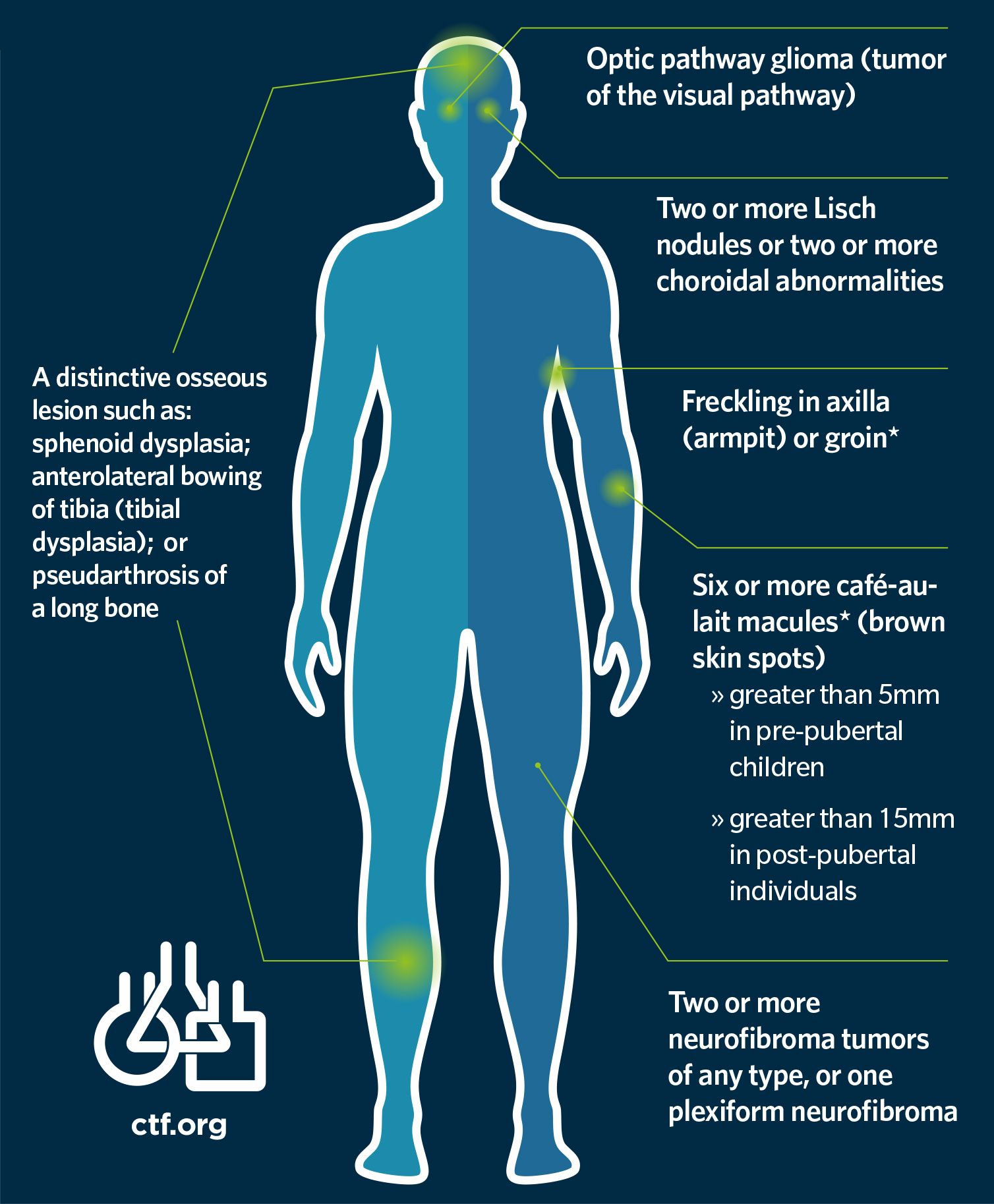Information for Health Care Professionals

Diagnostic criteria for Neurofibromatosis Type 1 (NF1)

A pathogenic NF1 gene variant**
- The term “mutation” is no longer accepted; pathogenic variant is now the preferred term.
- Genetic analysis is not REQUIRED for diagnosis but may allow for an earlier diagnosis.
- Genetic analysis ALONE is not sufficient to diagnose NF1 – diagnosis requires a second diagnostic feature of NF1.
A parent with NF1 based on diagnostic criteria
Glossary
Body Map for Early Identification of Neurofibromatosis
At Childhood Tumour Trust, we’re proud to be championing the inclusion of a Body Map in the national Personal Child Health Record (commonly known as the Red Book). While it has not yet been adopted nationally, each NHS Trust can order their own version to be inserted at the time of printing—and CTT will cover the cost of the first set to help make this important addition accessible.
Why is a Body Map Important?
A Body Map provides a simple, clear way to record birthmarks and skin features—especially café-au-lait spots, which are one of the early signs of Neurofibromatosis Type 1 (NF1). It can also be useful for documenting Mongolian blue spots and in safeguarding contexts. By noting and monitoring these marks, healthcare professionals and parents can support earlier identification and timely referrals.
If your baby or child has any visible birthmarks or café-au-lait spots, we encourage you to download and print the Body Map below and add it to their Red Book. It could make all the difference in ensuring early support and diagnosis.
Guidelines and checklists
NF1 Review checklists
These checklists for children and adults with NF1 are invaluable tools for tracking important wellness checks over time.
Download adult checklist Download child checklistInsert for the Red RCPCH Child Development Book
A concise guide tailored to include in the Royal College of Paediatrics and Child Health Red Book, this insert provides vital information for families and healthcare professionals tracking development milestones and care needs for children with NF1.
